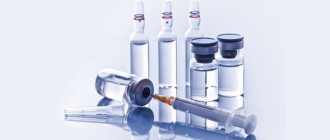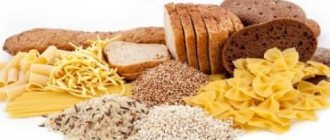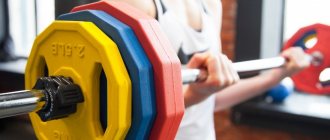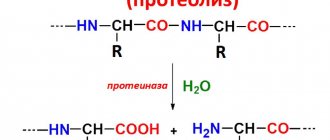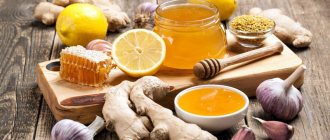Good results from working hard in the gym can only be achieved if you follow proper nutrition. A properly formulated diet is the key to success.
Every athlete who wants to build muscle mass should have cottage cheese on their menu. This product is rich in proteins and that is why it is so attractive for those who want to gain weight.
The article will talk about what kind of cottage cheese to eat to gain muscle mass and what the benefits of this product are.
How natural cottage cheese is made
The process of creating natural cottage cheese consists of several technological stages:
- Sourdough is added to milk, as a result of which the cottage cheese is fermented;
- the resulting mass is heated, resulting in a clot that contains whey and curd;
- the curd curd is filtered, dried and pressed.
This is how cottage cheese appears, which is included in the menu of all gym fans.
But, unfortunately, modern manufacturers make their own changes to this production process. As a result, the quality of the cottage cheese becomes worse.
When is it better to eat cottage cheese: before or after training?
Cottage cheese can be eaten before and after training. After exercise, it will help close the anabolic window. The carbohydrates it contains will stop the process of muscle fiber destruction, and the protein will promote rapid muscle recovery and active growth.
However, we should not forget that cottage cheese consists of 70% casein, which is digested very slowly. Therefore, it is better to use it before training or in the evening, 1.5 - 2 hours before bedtime. In this case, cottage cheese will provide a gradual supply of amino acids and glycogen necessary to maintain the body’s energy potential and restore it.
How to choose quality cottage cheese
A quick gain of muscle mass depends not only on regular training and a properly formulated diet. Success will be guaranteed if you choose exclusively natural and high-quality products.
What do you pay attention to when buying cottage cheese? For expiration date and package weight? First of all, you should read the composition of the dairy product you are purchasing. Natural cottage cheese contains only two components:
- natural cow's milk;
- leaven.
Unscrupulous manufacturers may produce cottage cheese with the following composition:
- Normalized milk is a type of milk whose fat content is artificially low or high. Fat content is usually increased with the help of palm oil, which promotes fat deposition.
- Milk-clotting enzyme - this drug increases the rate of coagulation, which significantly speeds up the process of cottage cheese production.
- E509 - calcium chloride - helps to increase the mass and quantity of the product.
Gaining mass means increasing muscle mass. In order not to increase the amount of fat deposits with muscles, carefully read the composition of the product.
To make sure you have purchased a quality product, you can try the following experiment:
- take a tablespoon of cottage cheese and iodine;
- drop a little iodine on the cottage cheese.
If the cottage cheese turns blue, then the product is of poor quality and is not recommended to eat. If the cottage cheese has not acquired a blue tint, then it is of good quality and can be eaten.
Cottage cheese for bodybuilders: how much, when and how?
Thanks to its unique set of nutritional components, cottage cheese has proven itself to be a universal means of building mass in bodybuilding - it is used as a pre-workout concentrate, as a snack after a workout and before bed. The dish goes well with whey isolates - many people add it to protein shakes to enhance the anabolic effect.
Our ability to digest high-protein foods is limited, so there is no point in endlessly increasing consumption standards. For maximum protein absorption, we recommend dividing the daily intake into two or three doses - for example, before or after training and at night.
Cottage cheese before training is eaten half an hour to an hour before going to the gym. Slowly soluble carbohydrates increase the athlete's strength potential, and protein creates a reserve for super-recovery of muscles. On the other hand, the energy boost lasts for about five hours, so don't despair if you only have time to eat 3-4 hours before class.
Low-fat cottage cheese is an excellent option for closing the protein-carbohydrate window. In addition to casein, fast proteins are also found in the curd curd - emergency aid for damaged fibers. Try to have a snack within half an hour after training - then the muscles will respond to feeding with explosive growth. Cottage cheese souffle mashed or whipped with a mixer with condensed milk or bananas can be used as a gainer, which is taken twice or thrice a day.
Prolonged absorption of casein eliminates the taboo on evening snacking. Low-fat cottage cheese, eaten before bed, maintains a feeling of fullness and prevents you from overeating in the morning. The only note is that you should not indulge in fat-containing delicacies late in the evening, so as not to burden the pancreas. How much cottage cheese to eat at night is a matter of appetite, but you should not get carried away beyond measure: swallowing more than 200 grams of any high-protein food, you risk disturbing your sleep.
Useful properties of cottage cheese
Since childhood, we have known that cottage cheese is an excellent source of calcium. This product is vital for kids and adults. Adequate calcium intake helps strengthen hair, nails, teeth and bones.
Cottage cheese is indispensable for athletes who dream of building muscle mass. Just think that 100 grams of this product contains as much as 20 grams of protein (more than meat).
Cottage cheese will help build muscle without gaining fat mass.
Here are some more reasons to pay attention to cottage cheese as a source of protein:
- Cottage cheese is quickly digested, unlike meat and legumes.
- Cottage cheese does not cause fermentation or discomfort in the intestines. On the contrary, it normalizes the functioning of the digestive system.
- This dairy product perfectly satisfies and keeps you feeling full for a long time.
- Cottage cheese is rich in vitamins. It contains vitamins C, A and B vitamins.
- Cottage cheese consists of fast and slow proteins, the tandem of which promotes muscle gain.
Benefits of Essential Amino Acids
Essential amino acids are something that the body is not able to produce on its own, so their intake into the body must be constant. If there is a lack of them or some acids are completely absent, then this is fraught with a decrease in immunity and loss of muscle mass. Their deficiency also affects the functioning of the brain and internal organs.
The most important amino acids for an athlete:
Tryptophan
– Takes part in the production of serotonin and can influence sleep and appetite.
Methionine
– helps the liver and kidneys recover.
Lysine
– takes part in the production of L-carnitine and helps better saturate the body with oxygen.
Phenylalanine
– takes an active part in collagen synthesis.
Valin
– necessary for the growth and restoration of all tissues in our body.
Leucine and isoleucine
– are metabolic amino acids and take an active part in the growth and restoration of muscle fibers.
Calorie content of cottage cheese of different fat contents
The main advantage of cottage cheese for people actively gaining muscle mass is not only the high protein content and its beneficial properties. The big advantage of the product is its low calorie content.
The table shows the calorie content of cottage cheese of various fat contents, as well as its content of proteins, fats and carbohydrates per 100 grams of product.
| Fats | Carbohydrates | Squirrels | Calorie content | |
| Low-fat cottage cheese (low-fat) | 1,8 | 1,5 | 20 | 85 |
| Medium fat cottage cheese | 9 | 2 | 17 | 155 |
| Fat cottage cheese | 18 | 2,5 | 15 | 227 |
It is worth drawing a conclusion which is the best cottage cheese for gaining muscle mass.
As can be seen from the table, there is more protein and less fat in low-fat cottage cheese. Therefore, low-fat cottage cheese for gaining muscle mass is considered an ideal product.
How to eat cottage cheese after training
The decision to eat or not after a workout is made based on the purpose for which a person goes to the gym: to lose weight or grow muscles.
In the first case, a woman or girl is recommended to have a cottage cheese snack (100-150 g) after training (in the evening, including) after 30-40 minutes or even an hour or two, while internal fat reserves are used. If you do not wait at least a minimum period of time, the body, having received an alternative, easier way to get energy, will stop burning fat and switch to what it has just eaten.
Low-fat cottage cheese will not return the calories spent on the exercise machine (if you maintain half the proportion: for example, 600 kcal spent 300 kcal ate), but weight loss will also stop. You also can’t delay eating for too long, as it “burns”, releasing energy, not only fat, but also muscle tissue.
In the second case, when training is aimed at gaining weight (usually the male half of trainees is interested in this), it makes sense for a man to close the anabolic window (eat something protein-carbohydrate) if he went to the gym on an empty stomach, and not if he had eaten beforehand.
The anabolic window is the first 30 minutes after training, when muscles are most receptive to the proteins and carbohydrates consumed at this time, and are intensively restored and grown.
What protein is in cottage cheese?
It was said above that cottage cheese contains several types of proteins, let's look at which ones:
- about 15% is hydrolyzed protein, which is absorbed instantly;
- 40% is whey protein, which is absorbed no less quickly than hydrolyzed protein;
- 45% is casein protein, it is this that gives satiety and can be absorbed from 5 to 7 hours.
Cottage cheese also contains the amino acid methionine, which helps the body absorb fats.
All the proteins that make up cottage cheese help the body maintain the required level of protein for many hours.
Benefits of cottage cheese after training
Cottage cheese is a unique product of natural origin, containing a large amount of protein and microelements. Approximately 50-60% of the composition is accounted for by the slow protein casein, which is absorbed for quite a long time, which is so important when regularly performing strength exercises or when losing weight. The net protein content is 18 g per 100 g of product.
Ideal as a snack or part of a diet, it satisfies hunger well and provides a feeling of fullness for a long time. Methionine (an amino acid) contained in cottage cheese reduces cholesterol levels in the blood and prevents fatty liver.
Cottage cheese contains calcium, necessary for the strength of bone tissue, phosphorus, zinc, potassium, sodium, iron, vitamins A, C, PP, B1, B2.
The calorie content of 9% fat cottage cheese is 236 kcal, medium fat content (3-5%) is 110 kcal. The slow carbohydrates it contains contribute to the gradual release of energy, maintaining body tone for a long time.
If we compare when it is better to eat cottage cheese - before or after a workout, then here we should focus on the carbohydrate content in it. They exist, but they are not enough to fully perform strength exercises. In this case, cottage cheese can be used as a snack, but add, for example, a banana, which contains a large amount of fiber.
Please help make this article better. Answer just 3 questions.
The best time to absorb cottage cheese is after a workout, when the supplied protein enters the muscles and does not go to meet energy needs.
About the benefits of low-fat cottage cheese
For those who are intensely involved in sports, low-fat cottage cheese is of no value. The lack of fat leads to lipid metabolism disorders, and calcium is not absorbed.
How much cottage cheese should you eat?
It was stated above in the article that cottage cheese is divided into several types:
- low fat (fat content no more than 3%);
- medium fat content (fat content no more than 9%);
- fatty (fat content from 18%).
When gaining muscle mass, you should eat only low-fat cottage cheese, since excess fat in the product interferes with the absorption of protein.
You can eat as much fatty cottage cheese as you like, but you will never notice any growth in muscle mass. The situation is different with low-fat cottage cheese: if you eat this product every day, the result will not be long in coming.
How to use cottage cheese to gain muscle mass? It is better to take 3 grams of protein per kilogram of weight. For example, if you weigh 68 kilograms, this means you need to eat approximately 200 grams of protein per day. This protein is contained in 4 kilograms of cottage cheese, but it is better not to consume this dairy product in such quantities. It is enough to just eat 400-500 grams of cottage cheese, and get the rest of the protein from sports nutrition or other protein products.
How to take cottage cheese to gain muscle mass
It is clear that any product, if used incorrectly, may not only not bring the expected effect, but may even be harmful to the body. This is especially important to understand for bodybuilders who eat cottage cheese for a specific purpose.
Let's look at the main points of taking cottage cheese to gain muscle mass. The daily dose of the product is determined strictly individually, but should not exceed 500 grams.
To saturate the body with carbohydrates and charge energy, and to saturate the muscles well with proteins, it is useful to eat cottage cheese an hour or even half an hour before training.
After finishing your workout, cottage cheese will help you quickly replenish the energy left in the gym, and give tired muscles a new portion of protein for a speedy recovery.
Athletes, unlike ballerinas, eat even after six in the evening, so they eat a portion of cottage cheese right before lights out. Such a late dinner is very important for gaining muscle mass, since the “slow” protein - casein - is especially well absorbed during sleep.
Bodybuilding is a rather complex system of training, lifestyle and nutrition. There are periods when an athlete needs to “dry out” his body and even lose weight. These days you shouldn’t give up cottage cheese, but its use requires clear adjustments.
So, while drying the body, experts advise eating cottage cheese in small portions throughout the day, 150 grams per day is quite enough.
During weight loss, the amount of cottage cheese should be further limited. After an intense workout for two to three hours, it is better to abstain from eating altogether, since at this time metabolic processes are activated, which massively destroy free fats. If you have a snack immediately after exercise, free fats will return to the tissues.
What time of day to eat cottage cheese
During the period of gaining muscle mass, it is better to eat cottage cheese several times a day. If strength training was in the evening, then you need to eat cottage cheese before bed. After training, you should have a hearty meal containing plenty of protein.
Cottage cheese at night for gaining muscle mass is very effective. During sleep, the body renews itself and it is during these hours that muscle mass grows. That’s why it’s so important to eat cottage cheese at night - muscles need building material for growth.
During the day, when gaining muscle mass, it is recommended to eat protein foods every three hours. At night, the body also needs to be provided with protein. How to do it? There are several options:
- wake up several times at night and eat protein foods;
- drink casein protein before bed
- Before going to bed, eat a portion of cottage cheese.
The cheapest and easiest option is the third one. Eating low-fat cottage cheese every day is not so pleasant - it is quite dry.
To make eating enjoyable, you can:
- add low-fat kefir to the cottage cheese;
- add banana, apples, pears and other fruits to the cottage cheese;
- add cinnamon or sugar substitute to the cottage cheese.
It is also useful to eat cottage cheese in the morning to gain muscle mass. You can add your favorite fruits to it or prepare simple dishes:
- cottage cheese casserole;
- syrniki;
- toast with cottage cheese.
The benefits and harms of cottage cheese
Let's take a closer look at the beneficial and harmful properties of cottage cheese.
The benefits of cottage cheese for an athlete
The benefits are expressed by the following points:
- It is a source of high-quality and inexpensive protein of animal origin . In bodybuilding, proteins of animal origin are considered complete. Read about the nutritional value of vegetable protein here;
- Contains casein, which is necessary for an athlete before bedtime . Casein protein is more expensive than regular protein. Cottage cheese is the cheapest source of casein;
- It is a source of vitamins and minerals , without which muscle growth is impossible, and the athlete’s health deteriorates. Cottage cheese contains B vitamins, calcium, phosphorus, selenium and other minerals;
- Cottage cheese in bodybuilding acts as a healthy food . Improves digestion, speeds up metabolism. Contains amino acids that help improve mood and improve performance;
- Improves health . All body systems function better, including the brain.
Harm of cottage cheese for an athlete
- Cottage cheese contains a lot of proteins . This is cool for a bodybuilder and any athlete. But only healthy ones. A high amount of protein becomes a factor that will significantly worsen your life if you have diseased kidneys. The harm lies not in the cottage cheese, but in the protein, which should not be consumed in high quantities if you have diseased kidneys. Bodybuilders consume 2 or even 3 grams of protein per kilogram of body weight. Healthy kidneys can withstand 2 grams, but sick kidneys “slip” even from a gram;
- The harm of cottage cheese is the development of a disease such as acne . Again, we are talking about a high amount of protein. Here we are talking about genetics, predisposition to skin diseases;
- Risk of running into a fake . They are minimal, but it is better to check the cottage cheese for fake using the method below. Unscrupulous manufacturers use starch instead of the product in question. Sometimes palm oil is added. This is rare, but worth considering.

